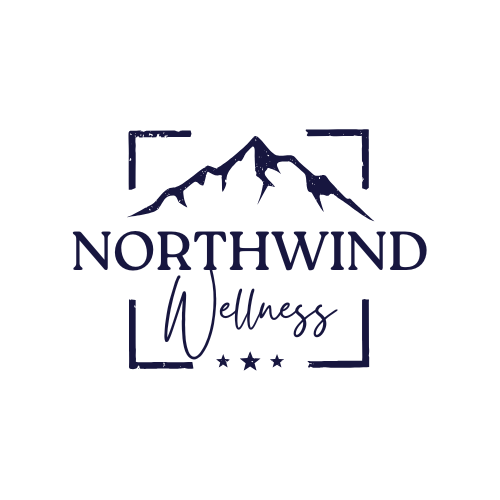Addiction Treatment Assisted by Medication (MAT)
Medication-Assisted Treatment Program (MAT) uses certain medications to provide a unique approach to treating substance use disorders combined with counseling and behavioral therapies. Some of the drugs approved by the Food and Drug Administration (FDA), known as FDA-approved medications, are naltrexone, buprenorphine, and methadone. These work best in combination with clinical therapies to treat substance use disorders—which is why MAT exists.
Medication-Assisted Treatment Program MAT can make a world of difference in long-term recovery for those struggling with addiction. These types of programs often take place in clinics which are also often known as suboxone clinics.
The prescribed medication—like buprenorphine, naltrexone, or methadone—normalizes brain chemistry, relieves physiological cravings, and normalizes body functions without the other substance’s adverse withdrawal effects.
Medication-Assisted Treatment Program (MAT) For Opioid Addiction
Medication-Assisted Therapy Program (MAT) is typically used for opioid-based addictions to substances like:
- Heroin
- Fentanyl
- Codeine
- Hydrocodone
- Vicodin
- Morphine
- Oxycodone
- Carfentanil

Opioids make it harder for the brain to detect pain by changing the body’s perception of pain. They can also impact other body systems, including altering mood, slowing breathing, and causing constipation.
Opioid receptor binding is when something finds a way to attach itself to a particular space in the brain that is meant to receive the signals that opioid medications send—which causes the signs and symptoms of overdose. It can cause the euphoric effects or “high” associated with opioid use. MAT works by acting on the same targets in the brain as heroin and morphine.
For example, methadone and buprenorphine suppress withdrawal symptoms and relieve cravings. At the same time, naltrexone blocks the effects of opioids at their receptor sites in the brain and is used only in patients who have already been through detox.
More rarely, MAT can be used for alcohol use disorders. Only three medications are FDA-approved for treating alcohol addiction. One of these is naltrexone, and it works very much as it does for opioids. It is known to help reduce cravings for both opioids and alcohol.
Suboxone, Methadone, and Others: Medications That Are Used in MAT Recovery
Medications used in MAT are approved by the Food and Drug Administration (FDA)—as we said above, we will be focusing only on these approved drugs when discussing the medication options for MAT.
A widespread misconception associated with MAT is that it substitutes one drug for another. This can be a common belief simply because those who don’t know what the medications do can seem like substituting one addiction for another. You need to be on the medication during treatment to enter into the lifelong recovery journey effectively.
In reality, these medications relieve withdrawal symptoms and psychological cravings. MAT programs are designed to provide a safe and controlled level of medicine. This can help overcome the use of an opioid.
Specific Medication Used in MAT
- Naloxone (Evzio, Narcan)
- Naltrexone (Revia, Vivitrol)
- Buprenorphine (Belbuca, Buprenex, Butrans, Suboxone, Subutex)
- Methadone (Diskettes, Dolophine, Methadose)
Is MAT Drug Treatment Successful at Treating Patients With Opioid Addiction?
Medication-Assisted Treatment Programs ( MAT ) are clinically driven, and MAT is known to be clinically effective. It provides a more comprehensive, customized plan of medication and behavioral therapy.
The ultimate goal for any addiction treatment program is always lifelong recovery. Research has shown many positive effects of MAT. One of the positive impacts of MAT is that contracting HIV or hepatitis C is significantly reduced. This is because of the proven lower rates of relapse, which comes from having a good plan. This could also be because the potential of sharing old or used needles is lower if there is a minor relapse of injectable drugs in general.
How the MAT Process Aids in Treatment and Recovery
- Improve patient survival
- Increase retention in treatment
- Decrease opiate use
- Increase patients’ ability to gain and maintain employment
- Improve birth outcomes among pregnant women who have substance use disorders
When a person has become physically dependent upon an opioid-based drug—significantly if the user has been prolonged—there is the potential for withdrawal. This is common, especially if they attempt to suddenly stop taking their drug of choice without appropriate care or supervision.
These symptoms can be debilitating and include:
- Nausea and vomiting
- Drug craving
- Weakness
- Insomnia
- Depression
- Muscle, joint, and bone pain
- Stomach pain
- Restless leg syndrome

These symptoms can be relieved by administering an opioid, so many fall back into an addiction to relieve the awful withdrawal symptoms. Fear of withdrawal is a significant reason many people continue to use these substances despite wanting to stop or agreeing to stop taking them.
Trading Addictions Isn’t Real: Stigma About MAT and the Medication Assisted Process:
A common misconception of MAT is it simply replaces one addiction with another, as we said above. This is a common thought, but it is incorrect.
MAT is NOT the substitution of one addiction for a new one. The medications are used in moderation under direct supervision. This is similar to how small doses of methamphetamine are used in prescriptions for ADHD. Like any drug you get from your local pharmacy, it’s all about the appropriate amount.
Suboxone also has a “ceiling,” meaning that it’s impossible to obtain a significant high. It is also super important to realize that not everyone should be on suboxone, but you’re often a good fit if you meet some or many of the following criteria:
- Addicted to opioids
- Low-cost option
- Allowed by Medicaid and Medicare
- Need flexibility for work
The professionals at Northwind Wellness work with every individual client to assess their needs and determine whether MAT is the best option for them.
Another thing to realize is that MAT is not the end of treatment. Instead, it is usually just the beginning. While it can help in the recovery process, it is not the only treatment method needed to achieve long-term recovery. MAT is most effective when used with education, evidence-based behavioral therapies, relapse prevention programs, and other treatment methods.
What Is the Difference Between MAT Programs and Traditional Addiction Treatment Programs?
It is important to remember that not every type of treatment is ideal for everyone. Every single person will benefit from having a tailored approach for themselves. There are various other treatment types for addiction other than MAT, and each has its benefits.
Some options in treating drug addiction include:
- Behavioral counseling
- Medication
- Medical devices and applications are used to treat withdrawal symptoms or deliver skill training.
- Evaluation and treatment for co-occurring mental health issues like depression and anxiety
- Long-term follow-up to prevent relapse
Various care programs alongside a tailored treatment program and follow-up options can be crucial to lifelong recovery for anyone struggling with addiction. Treatment should include both medical and mental health services as needed. Follow-up care may include community- or family-based recovery support systems.
Successful MAT Treatment Has Several Steps
These steps include but are not limited to:
- Drug detox
- Behavioral counseling
- Medication (for opioid, tobacco, or alcohol addiction)
- Evaluation and treatment for co-occurring mental health issues like depression and anxiety
- Long-term follow-up to prevent relapse
Suboxone clinic time commitment is vastly different from a traditional rehab setting. For example, you can expect to have a 3-8 hour day for your recovery treatment plan when attending traditional rehab or addiction treatment.
For MAT clinics like those you can find around the state of Oregon, you can expect 5-10 minute visits and 15-30 minutes behavioral health consult visits. During MAT, your initial visit will be more extended, which is like a traditional setting. However, this visit is filled with questionnaires and in-depth medical assessments.
These are important for making sure that MAT is the correct treatment option for you. This can also be a necessity to get insurance approval for medication-assisted treatment. Also, you can expect to have some semi-frequent clinic visits in the beginning as you get used to the medication and your provider or addiction treatment professional monitors your progress.
When it comes to MAT and traditional rehab, there is the potential for insurance co-pays and other costs associated with using insurance coverage for your recovery treatment. A lot of insurance companies now cover—and prefer—MAT programs over traditional types of rehab. The provider will have information about the total cost and payment options.
This is simply another way it is different from other traditional rehabs. The actual cost varies depending on the state where the person lives, health insurance coverage, and other factors.
So, what do you do next if you are ready to seek out care with medication-assisted treatment for yourself, a friend, or a loved one?
Why Choose MAT For Your Addiction Treatment? How MAT Can Help Patients With Recovery?
The withdrawal symptoms from opioids are incredibly intense and pose a considerable threat to recovery, made straightforward from years of research and experience. Opioids derail normal brain functions, leading to withdrawal symptoms like anxiety, insomnia, intense and painful muscle cramps, and sweating.
These symptoms often lead to relapse. MAT provides patients the relief from withdrawal symptoms they need to work through their recovery program.
Northwind Wellness views medication-assisted treatment as an essential tool in addressing and treating the chronic and progressive disease of opioid addiction.
Medication-Assisted Treatment Program (MAT) for Recovery
We offer naltrexone (Vivitrol®) and buprenorphine (Suboxone®) for maintenance to all patients with an opioid use disorder under this program. The decision between naltrexone (Vivitrol®) or buprenorphine (Suboxone®) for care is patient-centered and always combined with therapeutic and wellness programming.
Our MAT program incorporates evidence-based, solution-focused methods for treating opioid addiction.
Key elements of the program include:
- Integrating a medical component
- Providing extensive, holistic family education and therapy
- Engagement in treatment programming
- Ongoing support, monitoring, and communication throughout all levels of care

MAT for Opioid Addiction Disorder While in Treatment at Northwind Wellness
The withdrawal symptoms from opioids are incredibly intense and pose a considerable threat to recovery. Opioids derail normal brain functions, leading to withdrawal symptoms like anxiety, insomnia, severe and painful muscle cramps, and sweating. These symptoms often lead to relapse.
MAT provides patients the relief from withdrawal symptoms they need to work through their recovery program, as we saw above. Northwind Wellness views medication-assisted treatment as an essential tool in addressing and treating the chronic and progressive disease of opioid addiction.
It is important to stress again that medication alone is not a cure-all.
Medication must be used as just one piece in a comprehensive therapeutic program.
Our medically-driven program is designed to produce the best possible outcomes for patients. A dedicated medical team that includes Northwind Wellness’s medical director—certified by the American Board of Addiction Medicine—has overseen and managed the design and implementation of this program.
We recognize that addiction is a complex disease and requires comprehensive and patient-centered approaches.
We are committed to an abstinence-focused approach and believe that to help people. We must first be able to meet them where they are.
Will Northwind Wellness Prescribe Buprenorphine?
Northwind Wellness will be prescribing buprenorphine for patients needing stabilization and treatment in our inpatient residential facility in Coburg. Still, we work closely with prescribers across the region to ensure all patients discharging on MAT have a plan and a connection once they enter the outpatient phase of their treatment.
Will Northwind Wellness Prescribe Methadone?
We will not be prescribing methadone, and our MAT program includes naltrexone (Vivitrol®) and buprenorphine (Suboxone®) only.
Medication-Assisted Treatment Program FAQs
What medications are used for MAT?
The most common medications for MAT are buprenorphine (Suboxone®) and methadone. At Northwind Wellness, we utilize Suboxone® and Vivitrol® most frequently. These two drugs are a few of the FDA-approved medications for medication-assisted treatment.
What are the benefits of medication-assisted treatment?
There are many benefits to taking part in medication-assisted treatment. These include reduced risk of overdose and reduced risk of HIV or other diseases transmitted by used needles. There is also the benefit of lessened symptoms from withdrawal-like shaking, headaches, and intense cravings. Another significant advantage of MAT that is frequently overlooked is that it is proven to help inspire and lead to lifelong recovery by reducing the likelihood of relapse.
Is the Medication-Assisted Treatment Program effective?
Yes! MAT is known to be incredibly effective. It is also listed as one of the clinically proven addiction treatment methods by the Substance Abuse and Mental Health Services Administration (SAMHSA). MAT has a strong basis in clinical evidence-based medicine. Currently, the CDC is conducting another thorough study that seeks to prove the efficacy of a medication-assisted treatment program ( MAT ) for treating addiction.
Which medication is approved only for the treatment of pain?
Many medications are only prescribed for the treatment of chronic pain. Medications like Suboxone® are opioids that are only defined for addiction and NOT the treatment of pain.
What Is Our Philosophy?
Our goal is to provide a continuum of care services that will eventually lead to patient self-management. We meet patients and provide the care services and resources to help them find long-term recovery.
Northwind Wellness has pioneered many new programs, including outpatient and residential step-down programs that combine residential and outpatient services. Northwind Wellness has outpatient programs in many locations throughout Oregon. Northwind Wellness’s quality treatment of patients and their families is legendary.
Call (406) 309-6599 to speak with a member of our admissions team.
